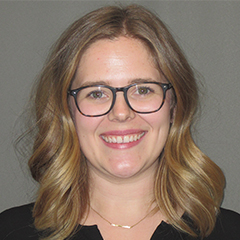U.S. Department of Health and Human Services, Office of the Assistant Secretary for Planning and Evaluation
This work of breaking down siloes happens locally, but agencies at the federal level have a number of levers available to help them encourage, promote, or support such collaboration. For example, in addition to modeling the desired behavior by breaking down federal siloes, federal agencies can use their convening power, ability to spotlight an issue, or on-the-ground staff to aid local efforts. Yet very little research exists on the relative effectiveness of these various federal levers under different circumstances.
Training and technical assistance (T/TA), one such federal lever, is often tailored based on community needs. Little is known, though, about effective T/TA strategies, including the most effective approaches to assessing these needs and designing and delivering T/TA to meet those needs to help break down siloes.
Research Question: How Can the Federal Government Best Support Local Coordination in Social Services?
The Office of the Assistant Secretary for Planning and Evaluation (ASPE) in the U.S. Department of Health and Human Services is interested in opportunities for federal agencies to support better cross-sector collaboration at the local level that ultimately helps increase economic mobility and well-being for children and families and reduce inefficiencies in social services programs. For the Models of Coordination and Technical Assistance to Achieve Outcomes in Communities project, Mathematica will partner with ASPE to explore several dimensions of federal-to-local efforts for cross-sector social service coordination. The project seeks to do the following:
- Describe previous federal efforts’ effectiveness in facilitating cross-sector coordination in state and local communities
- Better understand how T/TA providers or staff can assess local cross-sector collaboration needs
- Describe how to target T/TA so it addresses identified needs
- Develop a learning agenda for providing effective T/TA for local cross-sector coordination
- Identify key research gaps and next steps for using performance measures to assess and improve training and T/TA for cross-sector coordination
Evidence & Insights From This Project

Engaging Training and Technical Assistance Recipients: Lessons from the Field
This brief documents existing knowledge about training and technical assistance (TA) and develops a learning agenda to inform the design, focus, and effectiveness of training and TA.
Learn MoreRelated Staff
See Clearly. Act Quickly.
Our experts can help you make smart, sustainable decisions. From local to global challenges in health, human services, and international development, we’re here to improve public well-being and make progress together.
Work With Us




